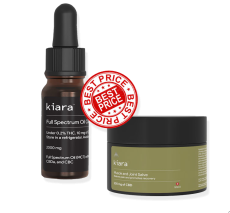CBD is nature's strongest antioxidant and may help treat oxidative stress
Oxidative stress is one of the main causes of the modern human “bundle of diseases” from vascular and heart disease to diabetes, cancer, autoimmune diseases, metabolic disorders, atherosclerosis, hypertension, stroke, arthritis, Alzheimer’s, Parkinson’s, Huntington’s, bronchitis, emphysema and more. Other consequences include damage to DNA and the hereditary genetic material and premature ageing.
![Antioxidant action of CBD against Reactive Oxygen Free Radicals [ROS] reducing Oxidative Stress 1 Antioxidant Action Against Free Radicals](https://moya-cbd.co.uk/wp-content/uploads/2021/08/Antioxidant-Action-Against-Free-Radicals-1024x596.jpg)
What is oxidative stress and how does it form?
Oxidation is the loss of electrons during a reaction by a molecule, atom, or ion. Oxidation occurs when the oxidation state of a molecule, atom, or ion is increased. The opposite process is called Reduction, which occurs when there is a gain of electrons or the oxidation state of an atom, molecule, or ion decreases.
Oxidation = electron loss <–> Reduction = electron gain.
Oxidation-Reduction reactions are very common in nature and form the basis of electrochemistry. Known and common oxidation-reduction reactions are the burning of sugars in the body, the rusting of iron, or the chemical reaction that occurs inside an electrical battery.
Oxidative stress occurs due to the activity of free radicals. Free radicals are atoms or molecules with an electron that are not paired in their outer orbit and therefore they are unstable, attacking the molecules around them, adding electrons to them (oxidizing), and turning them into free radicals themselves. In this way, a destructive chain reaction and harmful oxidative stress are created in cells and tissues.
Where do the free radicals come from?
Since the movement of animals from the oceans to land and the breathing of oxygen from the air, a by-product that is formed inside mitochondria are reactive oxygen species [ROS].
Our body produces ROS as natural processes of breathing air & metabolism of food. External factors like sun exposure, air pollution, smoking, various medicines and chemicals, artificial flavours and fragrances, stabilizers and preservatives, pesticides, ultraviolet radiation, alcohol, drugs, sleep deprivation, lack of physical activity, strenuous physical activity, and stress – all enhance ROS formation.
Reactive oxygen species (ROS) are integral components of multiple cellular pathways even though excessive or inappropriately localized ROS damage cells. ROS function as anti-microbial effector molecules and as signalling molecules that regulate such processes as NF-kB transcriptional activity, the production of DNA-based neutrophil extracellular traps (NETs), and autophagy. The main sources of cellular ROS are mitochondria and NADPH oxidases (NOXs). In contrast to NOX-generated ROS, ROS produced in the mitochondria (mtROS) were initially considered to be unwanted by-products of oxidative metabolism. Increasing evidence indicates that mtROS have been incorporated into signalling pathways including those regulating immune responses and autophagy. As metabolic hubs, mitochondria facilitate crosstalk between the metabolic state of the cell with these pathways. Mitochondria and ROS are thus a nexus of multiple pathways that determine the response of cells to disruptions in cellular homeostasis such as infection, sterile damage, and metabolic imbalance.
How does the body treat free radicals?
Our body produces antioxidants whose function is to neutralize the free radicals. Antioxidants get oxidized themselves but don’t create new radicals that attack other molecules, terminating the ROS destructive chain reaction. The most important antioxidants in our body are glutathione, lipoic acid, coenzyme Q-10, vitamins C, A, E, and minerals (such as selenium [Se] and zinc [Zn]). From a fresh plant diet, we get carotenoids, anthocyanins, flavonoids, and polyphenols that have strong antioxidant activity. The antioxidants that dissolve in water (like vitamin C) work in an aqueous environment, while fat-soluble antioxidants (like vitamin E) are protective of cell membranes and fatty tissues.
Glutathione molecule
Besides the quantity, the quality and variety of antioxidants are also important for maintaining good health. Organic sprouts contain a variety of active and important antioxidants, some of which are rare in nature.
Sulforaphane is a sulfur-rich compound found in cruciferous vegetables like broccoli, bok choy, and cabbage. It has been shown to provide powerful health benefits. Sulforaphane is activated when glucoraphanin comes into contact with myrosinase, a family of enzymes that play a role in the defence response of plants.
Broccoli sprouts contain a lot of glucoraphanin that turns to the active sulforaphane by the myrosinase enzyme as a result of chowing.
Glucoraphanin Sulforaphane
Sulforaphane induces glutathione (the main internal antioxidant) production in many types of cells in the whole body – reducing oxidative stress.
Did you know: Turmeric, garlic, and pomegranate are also known for their antioxidant properties.
CBD As An Antioxidant:
Cannabidiol works to restore the balance between free radicals and internal antioxidants by acting as a direct and powerful antioxidant against Reactive Oxygen Species (ROS), which damages cells in various tissues and stimulates inflammatory processes. CBD’s antioxidant activity is 30%-50% stronger than that of the water-soluble vitamin C or the fat-soluble vitamin E. Recent findings have shown that cannabidiol’s antioxidant activity is even stronger than that of Aspirin. Another surprising advantage is that CBD can maintain brain health, thanks to its antioxidant activity in neurons & synapses. Most neurodegenerative diseases are caused by toxins & ROS accumulating in the brain. ROS causes the accumulation of the neurodegenerative stimulating messenger = glutamate. In 1998, a US government-funded study was conducted that found and determined the effectiveness of CBD as an antioxidant.
Link to research: Cannabidiol and (−)Δ9-tetrahydrocannabinol are neuroprotective antioxidants
Following the study, the U.S. government patented the antioxidant feature of CBD.
You can see this in the following link: Cannabinoids as antioxidants and neuroprotectants
A 2000 study in mice found that CBD reduces the toxicity of various substances in the brain and suppresses inflammation.
Link for research: Neuroprotective antioxidants from marijuana
Reducing the toxicity of sulfur dioxide
An inorganic compound sulfur dioxide (SO2) is a toxic gas with a strong stimulating smell that is one of the most common, and difficult air pollutants, mainly due to its complexity in the atmosphere with oxygen and water that forms sulfuric acid, which is one of the components of acidic rain. Sulfur dioxide may be artificially produced, mainly, as a result of the activity of coal-fired power plants, or naturally as a result of volcanic activity. Sulfur dioxide is produced in the chemical industry on a huge scale, as part of the production process of sulfuric acid, which is the main and most important use of this substance. In a 2017 study, the endocannabinoid 2-AG was found to protect brain cells from inflammation caused by sulfur dioxide inhalation.
Because CBD inhibits the degradation of 2-AG and allows it to prolong its operation, the researchers believe they are on the right track to discover the full potential of cannabidiol as a defence from a variety of inflammation & infections.
Link to research: Endocannabinoid 2-arachidonoylglycerol protects inflammatory insults from sulfur dioxide inhalation via cannabinoid receptors in the brain
Summary
The development and formation of diseases and disorders, due to persistent oxidative stress, is a process that is difficult to predict at the beginning. This process varies from person to person, related to the healthy lifestyle and hereditary characteristics, the habitation and work environment, and the extent of exposure to oxidizing substances. It is possible that in the future it will be proven that a measured and consistent consumption of CBD over long years of life prevents future morbidity in these diseases, however, at the moment it is safe to say that the properties of CBD as an antioxidant make it an effective treatment even when the disease has already erupted. CBD soothes inflammation and decreases pain, balances blood pressure, and protects the blood vessels and the heart. CBD also protects the nervous system cells. These additional properties are extremely important and are also the benefit of CBD on other natural antioxidants.
Read more materials in the following links:
-
CBD Has Antioxidant and Neuroprotective Properties. What Does That Mean?
-
CBD Science: How Cannabinoids Work at the Cellular Level to Keep You Healthy
-
Understanding the molecular aspects of tetrahydrocannabinol and cannabidiol as antioxidants
-
Oxidative stress and mitochondrial dysfunction in Alzheimer’s disease
-
Cannabidiol and (−)Δ9-tetrahydrocannabinol are neuroprotective antioxidants
Want to experiment with quality CBD products?
MOYA recommends several products suitable for treating a variety of problems, it is worth taking a look at the store and learning our many products. For free advice and to select the right product for you – contact us


